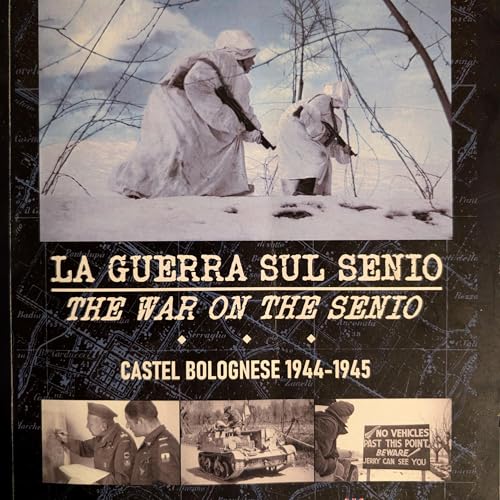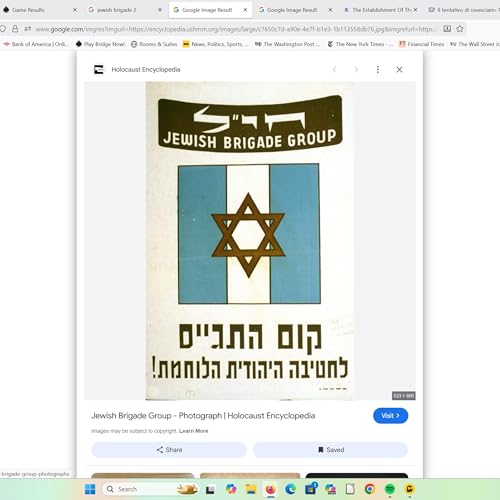War and politics can make for strange bedfellows and that axiom was as true 80 years ago in WW II in Italy as it is today. One prominent example of that was Brazil joining the Allied Forces to end Nazi and Italian Fascist tyranny in Italy on the Gothic Line Offensive. Before and during WW II, Brazil was led by dictator Getulio Vargas who took power in Brazil via a coup d'etat in the 1930s. His authoritarian inspiration came from none other than Adolf Hitler and Benito Mussolini. However after U.S. State Department lobbying that followed the Japanese Pearl Harbor attack in Hawaii on Dec. 7, 1941 and the subsequent sinking of Brazilian coastal merchant ships by German submarines, Brazil declared war in 1942 on the Axis Forces of Germany and Italy.
To help the Allied Forces, the Brazilian army formed a 25,000 soldier Brazilian Expeditionary Force (FEB). Unlike any other WWII army, the FEB was racially integrated - an example that would go on to help galvanize the U.S. African American civil rights movement.
However American military commanders were not impressed. The Brazilian military training and weaponry was based on WW I military doctrine and was therefore outdated and obsolete, especially as it concerned mountain warfare .
It was only when the U.S. Army Allied Command decided to move more than 25,000 U.S. troops out of Italy in mid-1944 to support the Normandy invasion in France and were desperately in need of replacements for the Gothic Line Offensive that the Brazilian FEB was deployed. That took place in the second half of 1944 in Tuscany. After their first combat training in WW II mobile and mountain warfare, the FEB was sent to the Apennine Mountains. Flanking them on their left was the segregated U.S. African-American 92nd Division ``Buffalo Soldiers'', who were also facing their first WWII combat. . The FEB's role was to work primarily with the U.S. Army 10th Mountain Division, which was also experiencing its first combat after more than two years of intensive mountain combat training in the United States.
The FEB suffered significant losses in its first combat when it was tasked with driving German troops off key strategic mountains that were blocking the U.S. Fifth Army from a breakthrough in its goal to reach Bologna before Christmas of 1944. Tactical errors were partly to blame for initial FEB failures. But strategically placed mountain-top German artillery also made their task difficult if not impossible.
By the spring of 1945, the FEB was, by all accounts, a much more effective fighting force and achieved major victories. One of those included the conquest of the mountain town of Montese west of Bologna where the FEB are feted annually.
Two authors - Brazilian Prof. Dennison de Oliveira and Italian museum curator Andrea Gondolfin - who have chronicled the story of the FEB in recent years - will provide in this podcast episode further insight to the Brazilian WWII story on the Gothic Line in Italy.
During the final segment of the episode we will fast forward 80 years when neo-fascism and war are threatening the European continent in eerily similar ways to what happened in the run-up up to WW II. As was the case in the 1930s, Brazil and its current Socialist President Lula da Silva has some ironical bedfellows. No. 1 on that list is Russian President Vladimir Putin, who President Lula da Silva has embraced and is indirectly supporting by buying diesel fuel from Russia even though Brazil has sufficient domestic supplies. President Lula has repeatedly rebuffed Western democratic country pleas, including from many that Brazil allied with in WW II, to join the effort to help Ukraine. Vitelio Brustolin, an international relations professor in Brazil and in the United States, will explain how by embracing Putin Lula is out of step with most Brazilians.
For more information about the podcast contact Joe Kirwin at joekirwin@compuserve.com or at 00 32 478 277802.
 1 時間 5 分
1 時間 5 分 49 分
49 分 43 分
43 分 20 分
20 分 22 分
22 分 45 分
45 分 2025/08/0951 分
2025/08/0951 分 53 分
53 分
